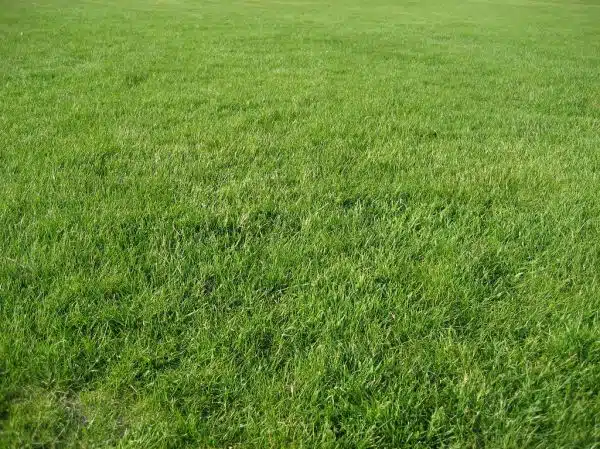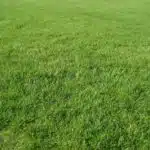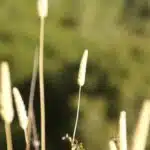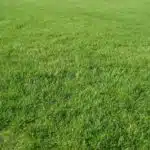As a lawn care specialist, it is important to know the ideal height for grass cutting. The length of grass can significantly affect the overall health and appearance of your lawn. Cutting your grass too short or too long can lead to various issues such as weed invasion, brown patches, and even damage to the roots.
The ideal height for grass cutting depends on many factors, including the type of grass, climate conditions, and personal preference. It is crucial to understand these factors to determine the best way to maintain your lawn. This article aims to provide an in-depth analysis of how high should grass be cut based on scientific research and practical experience in lawn care management. By following this guide, you can ensure that your lawn remains healthy and beautiful throughout the year.
The Importance Of Grass Height In Lawn Care
Maintaining the proper height of grass is an essential aspect of lawn care. The Benefits of leaving grass clippings on lawns cannot be overlooked, and it all starts with mowing frequency. One of the most common mistakes people make when mowing their lawns is cutting too short.
When you cut your grass too short, it can cause a variety of issues. First, it can lead to an increased need for watering, as shorter grass blades are more susceptible to drying out quickly. Additionally, cutting your grass too short can weaken the root system, making it less effective at absorbing nutrients and water from the soil.
Leaving grass clippings on your lawn after mowing can provide numerous benefits. Grass clippings act as a natural fertilizer that releases essential nutrients back into the soil as they decompose over time. They also help retain moisture in the soil and promote healthy microbial activity that further supports plant growth. With all this said about the importance of mowing frequency and leaving grass clippings on lawns, let’s now explore the ideal cutting height for various types of grasses.
Types Of Grass And Their Ideal Cutting Height
As we have discussed earlier, grass height plays a significant role in lawn care maintenance. The ideal grass height varies depending on the species of grass and the climate conditions in your area. Cutting the grass too short can lead to scalping, which is the removal of too much leaf tissue, causing stress to the plant. On the other hand, having long grass can encourage pests and diseases.
Grass species selection is crucial in determining the proper cutting height for your lawn. Different species have different growth habits that affect how they should be mowed. For instance, cool-season grasses such as Kentucky bluegrass and perennial ryegrass should be cut between 2 ½ to 3 ½ inches high while warm-season grasses like Bermuda and zoysia are better off being mowed between 1 to 2 inches high.
Besides selecting the right grass species, adjusting mowing frequency is also essential in maintaining an optimal cutting height. During periods of rapid growth such as spring or early summer, it may be necessary to mow more often than during periods of slower growth such as late summer or fall. Mowing too infrequently can result in having long blades that will require more than one-third of their length removed during each mow.
Climate conditions play a vital role in determining how high you should cut your grass. Warmer climates generally require shorter cutting heights due to higher rates of evapotranspiration (the loss of water through both evaporation from the soil surface and transpiration from plants). In contrast, cooler climates require longer cutting heights due to lower rates of evapotranspiration. It is important to keep this in mind when determining how often you should mow your lawn and at what height it should be cut.
Climate Conditions And Grass Height
Different geographical regions have varying grass heights that suit their respective climates. For instance, areas with warmer weather and higher humidity levels require taller grass to maintain moisture and keep the soil cool. In contrast, areas with cooler temperatures and lower rainfall have shorter grass to allow for more sunlight exposure, which encourages growth. Therefore, it is crucial to understand your location’s climate conditions before deciding on the ideal height for your lawn.
Several environmental factors also affect how high you should cut your grass. These factors include soil type, amount of rainfall, sun exposure, and temperature levels. A well-draining soil with adequate moisture requires less frequent mowing than a poorly drained one. Similarly, areas with high rainfall need less frequent mowing than those with low rainfall levels. Furthermore, grass in shady or cooler areas grows slower than those in sunny locations; thus, they require less frequent trimming.
In conclusion, understanding the relationship between climate conditions and environmental factors is essential when determining the appropriate height for your lawn. Geographical variations in grass height exist due to different climatic conditions that influence how tall or short your lawn should be. Additionally, several environmental factors affect how often you should trim your lawn to ensure healthy growth. Next up is personal preference and its role in determining the ideal height for your lawn.
Personal Preference And Grass Height
With climate conditions in mind, it is important to consider personal preferences when determining the height at which grass should be cut. According to a recent survey, 82% of homeowners prefer their grass to be cut between 2.5-4 inches in height. This statistic highlights the importance of understanding that lawn care is not just about maintaining a healthy lawn, but also about satisfying personal preferences.
While some may prefer shorter grass for easier maintenance, it is important to note that cutting grass too short can have negative consequences. One major risk is increased susceptibility to weeds and pests. Shorter grass leaves fewer resources for the roots to absorb nutrients and water, making the grass weaker and more vulnerable to damage from outside sources.
Ultimately, when deciding on an appropriate height for your lawn, it is important to balance personal preference with practicality and visual appeal. A well-maintained lawn not only enhances curb appeal but also contributes positively to the surrounding environment by reducing soil erosion and providing oxygen. Taking these factors into account will help ensure that your lawn remains healthy and aesthetically pleasing for years to come.
Transitioning into the subsequent section about ‘the risks of cutting grass too short’, it is important to recognize that while shorter grass may seem like an easy solution for maintaining a tidy lawn, there are potential drawbacks that should be considered before making any decisions regarding lawn care practices.
The Risks Of Cutting Grass Too Short
As a lawn care specialist, I cannot emphasize enough the importance of maintaining the optimal grass height. Many people assume that shorter grass looks neater and more attractive, but it actually poses several risks to your lawn’s health. In fact, allowing your grass to grow slightly taller can offer numerous benefits.
Firstly, taller grass provides better shade for the soil underneath, which helps retain moisture and prevents evaporation during hot weather. This reduces water usage and keeps your lawn looking lush and green even during drought conditions. Additionally, longer blades of grass promote deeper root growth, allowing your lawn to access nutrients more efficiently and making it more resistant to disease and pests.
Of course, regular mowing is still vital to keeping your lawn healthy. However, the optimal frequency may vary depending on factors such as grass type, climate and rainfall patterns. As a general rule of thumb, aim to cut no more than one-third of the blade length at a time. This not only ensures that you maintain the ideal height but also minimizes stress on the grass by preventing excessive leaf removal.
Incorporating these practices will undoubtedly help improve the overall health of your lawn. Nevertheless, there are still risks associated with cutting grass too short which we will explore in greater detail in the subsequent section about ‘The Risks of Cutting Grass Too Short.’
The Risks Of Cutting Grass Too Long
While cutting grass too short can lead to a host of problems, leaving it too long can be equally detrimental. Lawn maintenance requires careful attention to detail, and proper mowing techniques are essential for maintaining healthy grass. In this section, we will explore the risks associated with cutting grass too long.
Firstly, overgrown grass is more than just an eyesore; it can also harbor pests and disease. The longer the blades of grass, the more moisture they retain, creating a humid environment that attracts insects like mosquitoes and ticks. Additionally, overgrown grass creates shade that encourages fungal growth and other diseases that can quickly spread throughout your lawn.
Secondly, long grass makes it difficult for sunlight to reach the soil beneath it. Without adequate light penetration, your lawn may not receive the nutrients necessary for healthy growth. This can result in patchy or thin areas of grass that are susceptible to weeds and erosion.
Lastly, leaving your grass too long between mowings can make each subsequent cut more challenging. Thick blades of grass require more effort from your lawnmower to cut through cleanly, which can cause damage both to your mower and your lawn.
- Frustration at spending money on pest control due to overgrown lawns
- Concern about potential health risks from insect bites
- Disappointment at having a patchy or thin lawn due to insufficient nutrients
- Anxiety about erosion caused by inadequate light penetration
- Fear of damaging one’s lawnmower while attempting to cut thick blades
Incorporating proper mowing techniques is crucial for maintaining a healthy lawn. In the next section, we will explore how measuring your grass height can help you determine when it’s time for a trim and what tools are best suited for different types of lawns.
Transition: Now that we understand the risks associated with cutting our grass too long let’s take a look at how we can measure our lawn’s height accurately.
How To Measure Grass Height
The theory that the height of grass should be determined by the length of its blade is not entirely true. While it is reasonable to think that a blade’s length determines the height, other factors can affect how high grass should be cut. These factors include turfgrass species, weather conditions, and soil type, among others. An expert in lawn care knows that measuring tools and visual inspection are crucial in determining the ideal grass height.
Measuring tools such as rulers or yardsticks come in handy when measuring grass height. A tool like a ruler has measurements in inches or centimeters that will guide you on how high you need to cut your grass. Visual inspection also plays a significant role in determining the ideal height at which to cut your lawn. By observing how your grass responds to different cutting heights, it becomes easier to determine what works best for your lawn.
A table showing different turfgrass species and their recommended cutting heights evokes an emotional response from homeowners who want nothing but the best for their lawns. Having this knowledge helps them take care of their lawns better and ultimately saves them time and money. The next section discusses tools for cutting grass to the ideal height, which is essential knowledge for those who want healthy and beautiful lawns all year round.
Tools For Cutting Grass To The Ideal Height
To achieve the ideal height for your lawn’s grass, you need to have the right tools. The most important tool is a lawn mower, which can be either manual or powered by electricity or gas. A lawn mower makes it easy to cut grass evenly and at the desired height. Electric mowers are especially useful for small lawns, while gas mowers are better suited for larger properties.
Another essential tool for cutting grass to the ideal height is a hedge trimmer. Hedge trimmers allow you to trim around edges and obstacles like trees, flower beds, and fences with precision. They also provide a quick way of trimming any overgrown spots that cannot be accessed by a lawn mower.
In addition to these two primary tools, there are other implements that can make cutting grass easier and more efficient. These include edgers, string trimmers, and leaf blowers. All these tools work together in helping you achieve an even and well-manicured yard.
- A sharp blade on your lawn mower will give you cleaner cuts.
- Use safety gear such as gloves and eye protection when operating any power equipment.
- Regular maintenance of your lawn mower and hedge trimmer will extend their lifespan.
- Choose the appropriate cutting height based on the type of grass in your yard.
- Always consult your owner’s manual before operating any power equipment.
Moving forward, we’ll explore techniques for cutting grass to the ideal height without damaging it or exerting too much effort. These techniques will help you achieve a lush green lawn that is both beautiful and functional.
Techniques For Cutting Grass To The Ideal Height
To achieve the ideal height for grass, one must understand that it is a crucial aspect of lawn care. The length of the grass provides protection from soil erosion and helps retain moisture, which makes it essential in preserving the overall health of the lawn. A common mistake among homeowners is cutting their grass too short, leading to brown patches and weakened roots. Thus, it is necessary to know how high should grass be cut.
Grass height for sports fields varies from that of residential lawns. Sports fields require shorter grass, usually around 1-2 inches, to provide better ball control and reduce player injuries. On the other hand, residential lawns typically have longer grass between 2-3 inches. However, this length can vary depending on factors such as climate and type of grass.
Lawn mower blade adjustments are critical in achieving consistent grass height. It is crucial to ensure that the blades are sharp and level to prevent uneven cuts that could damage the lawn. Additionally, adjusting the blades according to preferred grass height will promote healthy growth patterns and improve overall appearance. Remembering these simple steps can lead to a well-maintained lawn with an ideal grass height that promotes healthy growth patterns in your yard.
Transition: While knowing how high should grass be cut is essential in maintaining a healthy lawn, maintaining consistent grass height throughout the yard is equally crucial.
Maintaining Consistent Grass Height
To achieve a healthy and vibrant lawn, grass height consistency is essential. The ideal height for grass varies depending on the type of grass and the season. However, in general, it is recommended to mow your lawn when the grass reaches one-third higher than its ideal height. This practice ensures that you do not cut too much of the blade at once, which can stress your lawn and result in brown patches.
Best practices for maintaining consistent grass height include using sharp blades, ensuring proper mowing frequency, avoiding overwatering, and being mindful of environmental conditions. Dull mower blades can tear the grass instead of cutting it cleanly, leading to uneven patches. Additionally, mowing too frequently or infrequently can also affect your lawn’s health and appearance. Overwatering can promote fungal growth and weaken roots, while environmental conditions such as temperature and humidity can impact how quickly your lawn grows.
As seasons change, adjustments to grass height are necessary to maintain optimal health. For instance, during hot summer months, raising the mower blade slightly higher than usual can help shade roots from the sun’s heat. In contrast, during cooler fall months, gradually reducing your lawn’s height to its ideal level before winter sets in promotes healthier growth in springtime. By following these best practices and adjusting accordingly throughout the year, you can ensure a consistently beautiful lawn.
Seasonal Grass Height Adjustments
Seasonal grass growth can vary greatly depending on the time of year and location. In general, grass grows faster during the warmer months and slower during the cooler months. As such, it is important to adjust your grass height maintenance routine accordingly. During the spring and summer months, it is recommended to keep your lawn at a height of around 2-3 inches. This allows for healthy growth while still maintaining an aesthetically pleasing appearance.
During the fall and winter months, however, it is best to raise your mower blades and allow for a slightly longer grass height. This helps protect the grass roots from cold temperatures and potential damage from frost or snow. A good rule of thumb is to aim for a height of around 3-4 inches during these seasons.
Proper seasonal grass height maintenance not only ensures a healthy lawn but also contributes to overall curb appeal. By adjusting your mowing routine based on seasonal changes, you can achieve optimal results year-round. Keep in mind that neglecting this aspect of lawn care can lead to common grass height mistakes such as scalping or overgrowth which can be detrimental to your lawn’s health and appearance.
Common Grass Height Mistakes To Avoid
As discussed in the previous section, seasonal adjustments to grass height are necessary for maintaining a healthy lawn. However, even with the appropriate seasonal adjustments, common mistakes can lead to suboptimal results. One of these mistakes is not having a clear understanding of the ideal height for your specific type of grass.
The ideal height for grass can vary depending on the species, but as a general rule, most grass types should be kept between 2.5 and 4 inches. Cutting too low can result in weak roots and increased vulnerability to weeds and pests, while cutting too high can lead to thatch buildup and decreased sunlight penetration. To avoid these extremes, it is important to measure accurately and adjust your mower blades accordingly.
Measuring accurately involves measuring from the soil surface to the top of the blade, rather than from the tip of the blade itself. It is also important to keep your mower blades sharp to ensure a clean cut that won’t damage or tear the grass blades. By avoiding common mistakes and measuring accurately, you can maintain an optimal grass height for a healthy and vibrant lawn.
As important as it is to understand ideal grass heights and how to achieve them, there will inevitably be issues that arise despite our best efforts at prevention. Troubleshooting grass height issues requires careful observation of symptoms such as browning or thinning patches, which may indicate improper mowing practices or underlying health problems. In the subsequent section, we will discuss common issues related to grass height and how they can be resolved effectively without causing further damage or stress to your lawn.
Troubleshooting Grass Height Issues
When it comes to maintaining a properly manicured lawn, grass height is a critical factor that should be given careful consideration. The ideal length of grass can depend on several factors, such as the type of grass, its growth rate, and weather conditions. However, a general rule of thumb for most types of grass is to cut it no shorter than two inches and no higher than three inches.
Lawn mowing frequency can also affect the overall health and appearance of your lawn. It’s recommended to mow your lawn once a week during the growing season and adjust this schedule based on how quickly your grass grows. Frequent mowing at proper heights stimulates healthy root growth, reduces weed infestation, and helps maintain an even appearance throughout your yard.
Properly cutting your grass can also aid in weed control by reducing their ability to grow and reproduce. Weeds require sunlight to thrive; thus, keeping your grass at an optimal height shades out weeds from receiving adequate sunlight. Additionally, when you cut off the top portion of weeds regularly before they flower or produce seeds will prevent them from spreading throughout your yard.
Next up: Lawn care tips for optimal grass health .
Lawn Care Tips For Optimal Grass Health
As a lawn care specialist, I understand the emotional attachment that homeowners have with their lawns. We all want our lawns to be green, lush, and healthy. To achieve this, there are several factors that must be taken into consideration. One of the most important factors is grass height.
Maintaining the correct grass height is vital for optimal grass health. Grass should be cut at a height of 2-3 inches. This height allows for proper photosynthesis and root development, which in turn leads to healthier and more resilient turf. Additionally, keeping grass at this height can help prevent weeds from taking over your lawn.
In addition to proper mowing techniques, there are other steps you can take to ensure optimal grass health. Benefits of mulching include adding valuable nutrients back into the soil as the clippings decompose, reducing the need for fertilizers and minimizing waste. Another important aspect of lawn care is soil aeration which involves perforating the soil with small holes to allow air, water and nutrients to penetrate the grassroots easily.
Grass height may seem like a minor detail in lawn care management but it plays a crucial role in maintaining optimal turf health. By following these tips on mowing techniques along with incorporating mulching and soil aeration practices, you can help ensure your lawn stays healthy year-round. In conclusion: The importance of grass height in lawn care management cannot be overstated as it affects not only the aesthetic appeal but also impacts overall turf health and longevity.
Conclusion: The Importance Of Grass Height In Lawn Care Management
Grass height is an essential factor in lawn care management. It is crucial to understand the benefits of longer grass, as well as the appropriate mowing frequency and height. Long grass has many advantages that are often overlooked or not understood by homeowners.
Firstly, longer grass can help to prevent weed growth. Tall grass shades the soil, reducing light penetration and making it difficult for weeds to grow. Additionally, taller blades of grass provide a natural barrier that helps to prevent weed seeds from germinating.
Secondly, longer grass promotes deeper root growth. This means that your lawn will be more resilient during droughts and other environmental stressors. Deeper roots also mean that your lawn will require less water over time.
When it comes to mowing frequency and grass height, there are a few things to keep in mind. The ideal mowing frequency will depend on several factors, including your lawn’s species of grass, soil type, climate conditions, and overall health. As a rule of thumb, it’s best to avoid cutting more than one-third of the blade at any given time.
In conclusion, understanding the importance of grass height is critical for proper lawn care management. Longer grass offers many benefits that homeowners often overlook. By maintaining an appropriate mowing frequency and height, you’ll ensure that your lawn remains healthy and vibrant throughout the year. Remember always to consult with a lawn care specialist for advice tailored specifically to your unique situation.
Conclusion
Grass height is a crucial element in lawn care management, as it significantly affects the overall health and appearance of your lawn. The ideal grass height varies depending on several factors such as the type of grass, climate conditions, and personal preference. It is important to understand these factors and adjust your cutting height accordingly to ensure optimal grass health.
Different types of grass have different ideal cutting heights. For instance, Bermuda grass should be cut at 0.5-1 inch while Zoysia grass should be cut at 1-2 inches. Climate conditions such as rainfall and temperature also play a significant role in determining the best grass height for your lawn. In hot and dry climates, it is recommended to keep the grass longer to retain moisture while in wetter climates, shorter grass may be appropriate.
Personal preference is also important when choosing your ideal cutting height. Some homeowners prefer a shorter cut for a neater appearance while others prefer longer grass for its natural look. However, it’s important to note that cutting grass too short can cause damage to the roots and lead to an unhealthy lawn.
Cutting grass too short is one of the most common mistakes made by homeowners when caring for their lawns. This can lead to weakened roots, increased vulnerability to disease and pests, and unsightly brown patches on your lawn. Troubleshooting issues with your grass height involves identifying the underlying problem which could range from dull blades or incorrect mowing techniques.
In conclusion, understanding the importance of proper grass height in lawn care management will help you achieve a healthy and visually appealing lawn all year round. By taking into consideration factors such as type of grass, climate conditions, and personal preference you can choose an appropriate cutting height that will promote optimal growth and health for your lawn. Remember that maintaining proper mowing techniques will not only enhance the beauty of your lawn but also increase its resilience against environmental stresses over time.
Image Credits
- “Grass” by eh3k (featured)





























